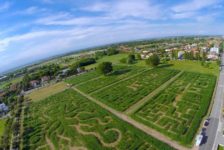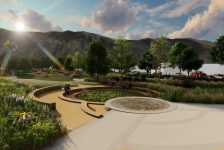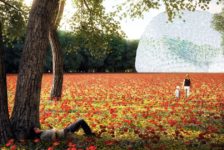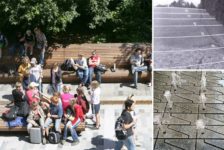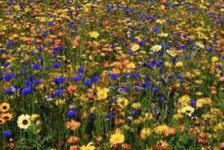In the last post, we compared hard copy portfolios with digital versions. Today, we need to find something to put in it, whatever platform you are working with. Below are a few ideas, some are obvious, but perhaps not all of them. While you read through these, consider who you are making this portfolio for.
- Technical Drawings: Site Plans, sections, elevations, details, and GIS maps. The bread and butter of getting work built!
- Graphics: Beautiful renderings, sketches, perspectives, and models are important and speak to an ability to communicate your ideas.
- Process Graphics: Conceptual plans and other doodles that went into conceptualizing your work are especially important to prospective employers. These may not seem so important, but they do illustrate your thought processes.
- Photography: Photographs that show the project looking its best can be very effective. A warning: if you include photographs of projects that you did not have a hand in creating, make this fact absolutely clear.
- Style Boards: Not all firms or projects use these, but they can still be very useful for getting a concept across fast.
- Project Information: Project descriptions, size, location, budget, the scope of work, project team members, awards, and other information. Some people like to include written information in the portfolio while others prefer a more purely visual approach.
- Project Management: Schedules, budgets, proposals, and cost estimates come to mind. Someone who wants to be a designer should, of course, present a design-driven portfolio. Conversely, someone who aspires to a position that is more supervisory should be ready to provide materials related to this aspect of the work.
- Writing Samples: Have you written articles for design publications or newspaper articles? Do you write or contribute to a blog? Maybe you wrote really awesome memos at your last job…clients may not be as interested in this, but prospective employers often want to see that you can write.
- Sketches: Hand drawings and sketches related to Landscape Architecture are becoming increasingly rare. Please don’t include sketches of your mother or your dog. Limit yourself to the subject at hand.
- YOU: Again, we’re back to you. If your portfolio will be viewed without your wonderful self sitting right there, consider adding your name and contact information. True, you can contain all this in an email or cover letter, but what if your viewer chooses to bookmark your digital portfolio and deletes the email or loses the cover letter that came with the printed copy?
Landscape Architecture portfolios are unique because when the project has been installed, it may be years away from looking its best, and may or may not ever reach that potential. Most of the time, we are not in control over how our work will be treated down the line, though we do the best we can to protect our client’s investment. This fact alone makes portfolio design for Landscape Architecture especially challenging.
While our work literally grows, and even if it dies, we can still add to and improve how these projects are represented in our portfolios. We’ll review some of these ideas next time.
As always, please comment or drop me a line. Did I miss something? How has your content affected your portfolio’s efficacy?
Published in Blog


